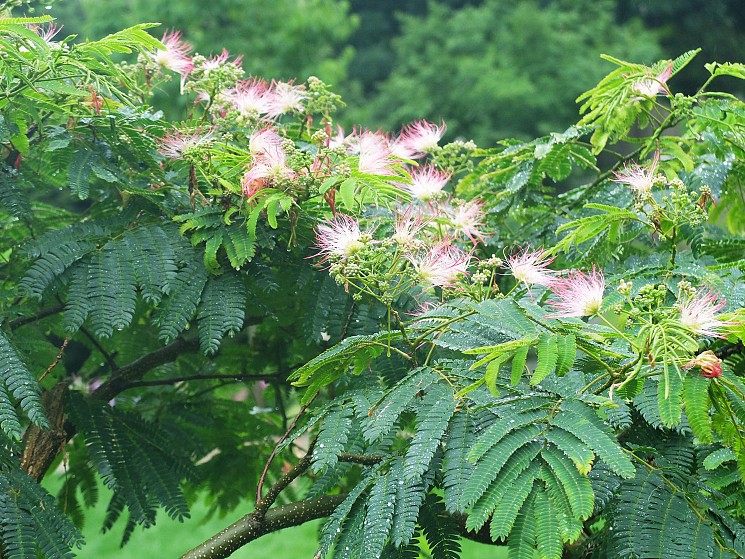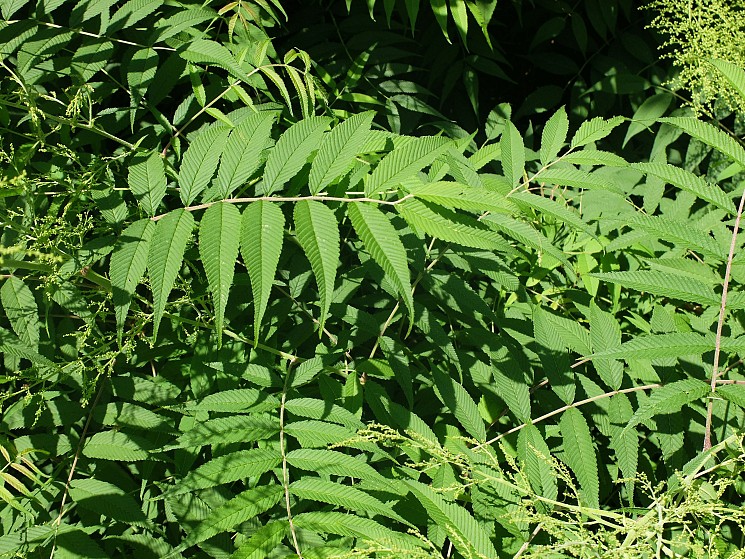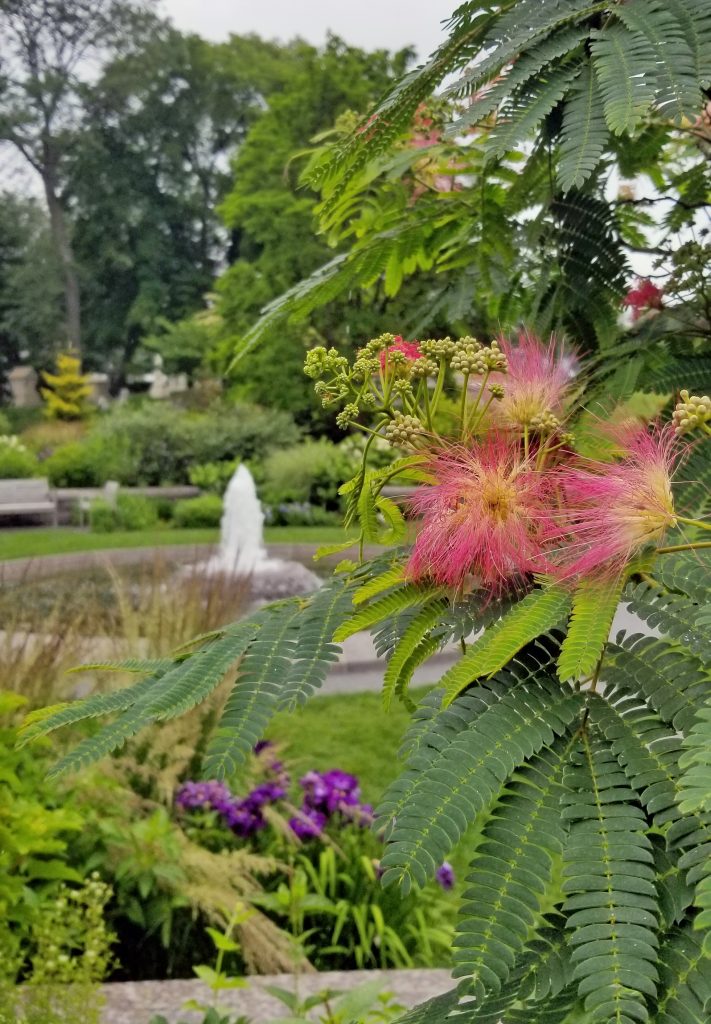Horticulture Highlight: Trumpet creeper

Go north a dozen years
on a road overgrown with vines
to find the days after you were born…
-Faith Shearin
One vine renown for rampant overgrowth is Trumpet creeper, Campsis radicans. Native of moist woods, roadsides and fencerows from Pennsylvania to Missouri, south to Texas and Florida, it has since been naturalized well beyond its original range. Everywhere it now grows it is vigorous as well as a joyous sight in flower. Renowned plantsman Michael Dirr opines, “If you can not grow this, give up gardening…”.
(more…)Horticulture Highlight: Bugbane, Black Cohosh

Horticulture Highlight: Actaea racemosa, Bugbane, Black Cohosh
…twisted like a mobius
belt, before insinuating your noxious
nectar – omnivorous, odoriferous, officious
orifice-filler, you…
-Mark Levine
While in bloom, Actaea racemosa, Bugbane, Black Cohosh, with tall stems and long fleecy flowers is truly eye-catching. These same blossoms emit an unpleasant odor. Centuries ago, some thought this smell could repel insects, hence one common name bugbane. The non-entomological etymology has a basis from Algonquin Native Americans. Cohosh is derived from co-os, meaning pine tree, alluding to the pointed spikes.
(more…)Silk Tree

…as though you expected to find some strange presence behind you
coming through the diamond-paneled bay window of your sanctum
a crimson-flowered silk dressing gown…
-Keith Waldrop
Silk Tree, Albizia julibrissin in flower presents a curious, powder-puff-like flower, comprised not of petals but rather numerous showy thread-like stamens. Each stamen at one-inch or longer is deep-pink/reddish in their upper third and white at the bottom. The month of August, into late September and sometimes even earlier in late July is their long season of bloom.
(more…)Ural falsespirea

…I studied bees, who were able
to convey messages through dancing
and could find their ways
home to their hives
even if someone put up a blockade of sheets
and boards and wire…
Naomi Shihab Nye
Landscape design considerations for attracting pollinators might more recently have been increasingly focused on floriferous herbaceous perennials. At Mount Auburn we include many of those but also know that trees and shrubs are an essential part of our pollinator support. Honeybees, bumblebees, sweat bees, mason bees, mining bees among numerous other types of bees, as well as other kinds of pollinators, are attracted to the expansive cornucopia of blossoms throughout the total growing season within our landscape.
(more…)